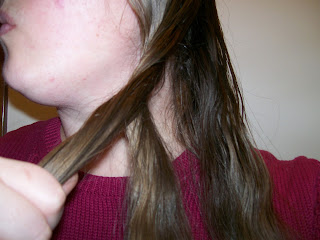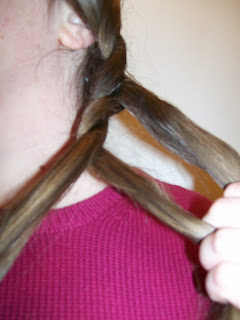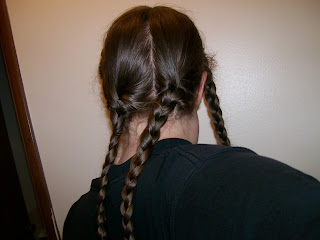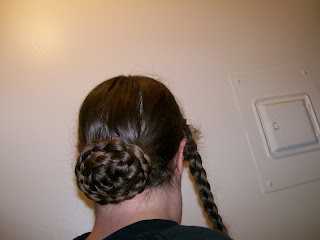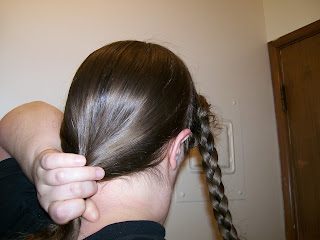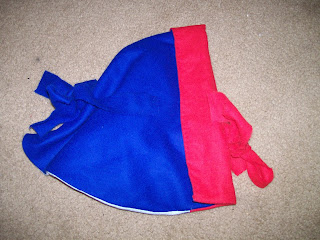These different braids make a comeback twenty years later: Sylvia's Book of the Toilet (1881) has almost identical instructions to those Englishwoman's Domestic Magazine. [Additionally, there's an amusing denunciation of the frizettes and chignons common in the 1860s.]
But back to the task at hand: a cable plait or "cable twist".
"Take three pretty thick strands of hair of equal size, place one in the centre, take the left hand strand and lift it under the centre one, and over it, and back to its own place; take the right hand strand and lift that under the centre one, and over it, and back to its place; work on thus alternately to the end. The best way of weaving this is to divide the back hair into two equal portions, and then make two "cables", and, having twisted them round each other, to wind the double cable around the head."Step 1: Divide hair into three equal sections.
Step 2: Take the left hand section under the center strand, and bring it around back to its starting place.
Step 3: Take the right hand section under and around the center strand, and back to its starting place.
Step 4: Repeat with the left strand, then the right, until the desired length is reached. Tie off the plait.
Here's the same process with multicolored yarn instead of hair, for easier viewing.
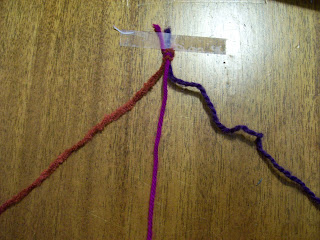 |
| Step 1: Three strands; orange on the left, pink in the middle, purple on the right. |
 |
| Step 2: Purple strands goes under and around the pink one, coming back over the pink to it's spot on the right. |
 |
| Step 2: Orange goes under the pink strand, then goes back over the pink to its place on the left. |
 |
| Voila. |
Step 1: Divide hair into three equal sections.
Step 2: Take the left hand section over the center strand, making it the new center (the old center strand is now on the left).
Step 3: Take the right hand section over the center strand, so that it is now in the center.
Step 4: Repeat with the left strand, then the right, until the desired length is reached. Tie off.
And with the yarn. Note how each strand ends up left, then center, then right, then center, and so on. In the cable plait, however, the initial left strand is always the left-most, the right strand is the rightmost.
 |
| Step 1: Start orange/pink/purple as before. |
 |
| Step 2: Take the purple strand over the pink one, and place it between the orange and pink strands. Purple is the new center strand. |
 |
| Step 3: Take the orange strand over the purple. Purple is now the left strand, orange is the middle, pink is the right. |
 |
| Step 4: Take the right strand into the middle, again (this time, it's pink over orange). Then the left (purple over pink). |
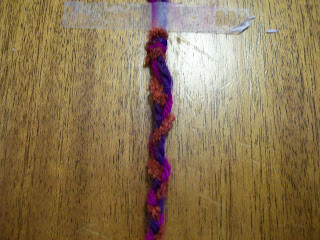 |
| The three-plait braid. |

